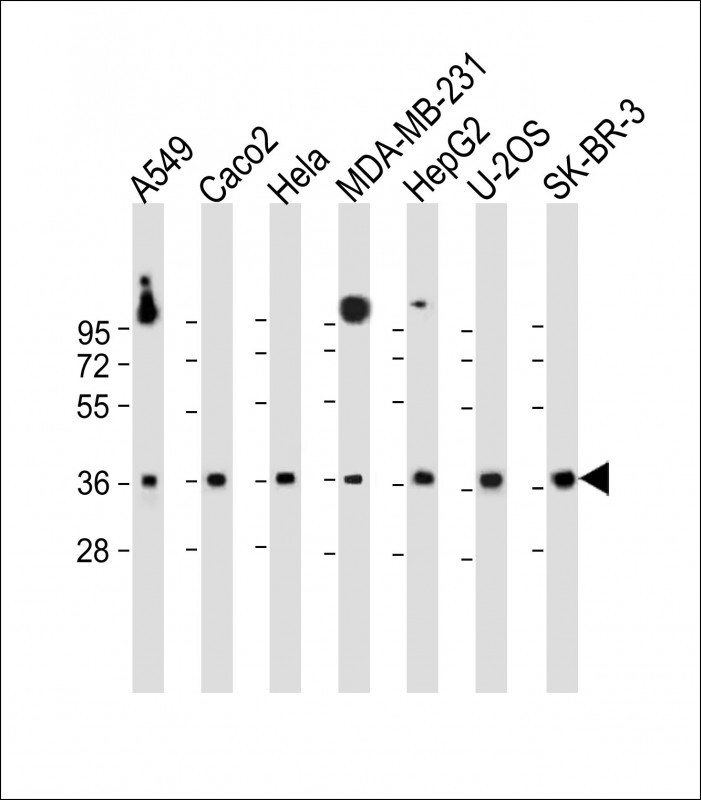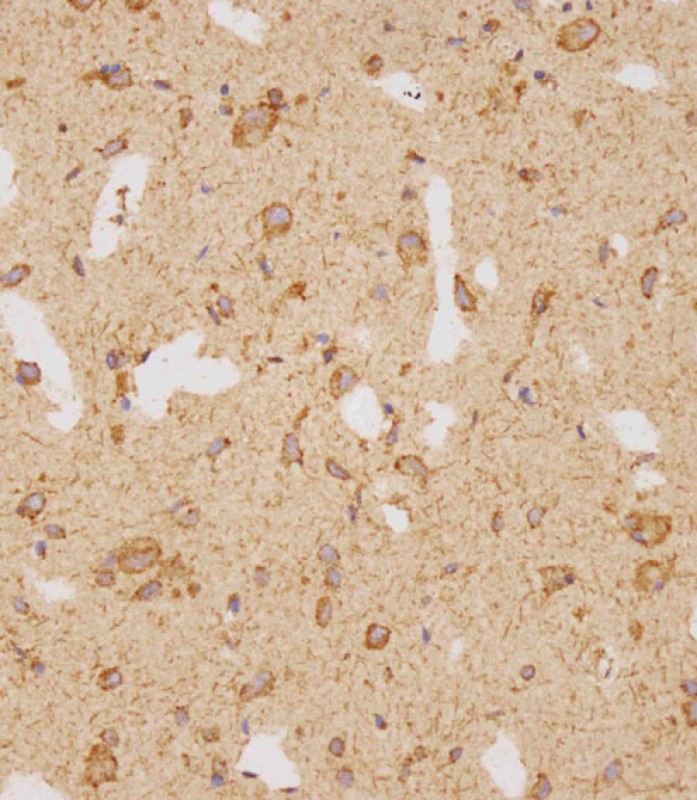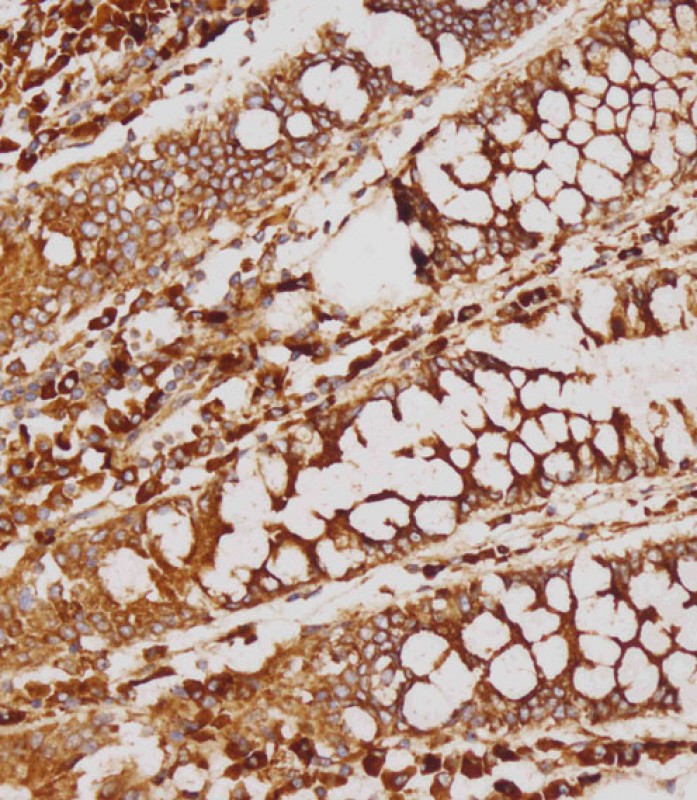


| WB | 咨询技术 | Human,Mouse,Rat |
| IF | 咨询技术 | Human,Mouse,Rat |
| IHC | 1/250 | Human,Mouse,Rat |
| ICC | 技术咨询 | Human,Mouse,Rat |
| FCM | 咨询技术 | Human,Mouse,Rat |
| Elisa | 咨询技术 | Human,Mouse,Rat |
| Aliases | GATS-like protein 1, GATSL1 |
| Entrez GeneID | 729438 |
| WB Predicted band size | 36.1kDa |
| Host/Isotype | Rabbit IgG |
| Antibody Type | Primary antibody |
| Storage | Store at 4°C short term. Aliquot and store at -20°C long term. Avoid freeze/thaw cycles. |
| Species Reactivity | Human, Mouse |
| Immunogen | This GATSL2 antibody is generated from rabbits immunized with a KLH conjugated synthetic peptide between 25-51 amino acids from the N-terminal region of human GATSL2. |
| Formulation | Purified antibody in PBS with 0.05% sodium azide. |
+ +
以下是关于GATSL1(N-term)抗体的3篇示例文献(内容为模拟示例,实际文献需通过学术数据库查询):
---
1. **文献名称**: "GATSL1 regulates centrosome maturation and mitotic progression via microtubule stabilization"
**作者**: Li Y, et al.
**摘要**: 本研究利用GATSL1 (N-term)抗体进行免疫沉淀和免疫荧光实验,发现GATSL1通过结合α-tubulin调控微管稳定性,影响有丝分裂中中心体成熟和染色体分离,敲低GATSL1导致细胞周期停滞和凋亡。
---
2. **文献名称**: "A novel role of GATSL1 in mitochondrial metabolism revealed by N-terminal antibody-based proteomic screening"
**作者**: Chen X, et al.
**摘要**: 通过GATSL1 (N-term)抗体的Western blot和质谱分析,发现GATSL1与线粒体呼吸链复合体相互作用,调控ATP生成和氧化磷酸化,其缺失导致小鼠模型中线粒体功能紊乱。
---
3. **文献名称**: "GATSL1 deficiency disrupts embryonic development via Wnt/β-catenin signaling"
**作者**: Wang R, et al.
**摘要**: 使用GATSL1 (N-term)抗体进行组织免疫组化分析,证明GATSL1在胚胎发育中通过调控Wnt通路活性影响中胚层分化,基因敲除小鼠表现出神经管闭合缺陷和胚胎致死表型。
---
**提示**:以上为模拟示例,实际文献建议通过PubMed、Google Scholar等平台以“GATSL1 antibody”或“GATSL1 N-terminal”为关键词检索,并筛选涉及该抗体应用的分子机制或功能研究。
The GATSL1 (N-term) antibody is a specialized tool designed to detect the N-terminal region of the GATSL1 protein, a member of the GATS (GATA-like) family. GATSL1. also known as FAM136A, is a conserved eukaryotic protein implicated in diverse cellular processes, including mitochondrial function, lipid metabolism, and cell cycle regulation. While its exact molecular mechanisms remain under investigation, studies suggest GATSL1 interacts with enzymes involved in phospholipid biosynthesis and may influence mitochondrial membrane integrity or energy homeostasis. Dysregulation of GATSL1 has been linked to metabolic disorders and cancer progression, highlighting its potential role in disease pathways.
This antibody is commonly used in techniques like Western blotting, immunofluorescence, or immunoprecipitation to study GATSL1 expression, localization, and protein interactions. Its specificity for the N-terminal domain allows researchers to distinguish GATSL1 from related family members or splice variants. Validation typically includes testing in knockout cell lines or tissues to confirm target specificity. As research into mitochondrial biology and metabolic regulation expands, the GATSL1 (N-term) antibody serves as a critical reagent for unraveling the protein's functional contributions to cellular physiology and pathology.
×